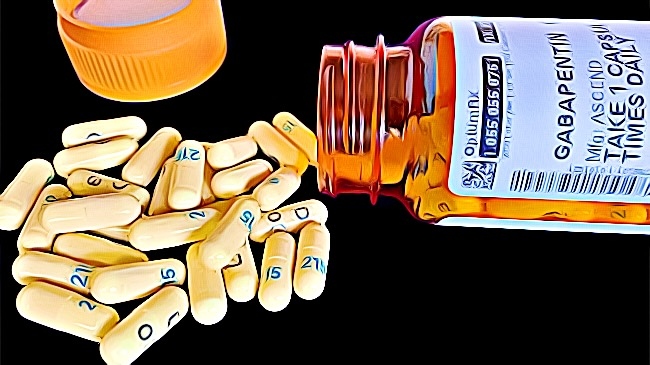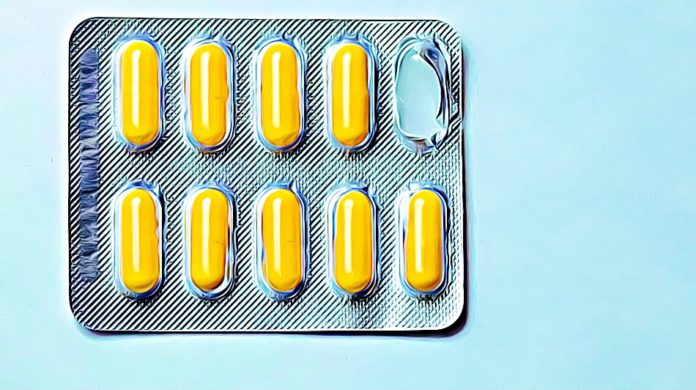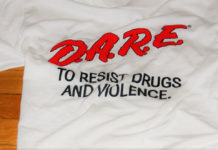Gabapentin is considered a mild tranquilizer, which is essentially an anticonvulsant drug only legal for use with a prescription. Doctors use it to ease the pain from nerve damage or any onset of seizures. For others, it serves as a medical treatment for withdrawal (alcohol and cocaine), restless leg syndrome, diabetic neuropathy, and even anxiety.
Is Gabapentin Addictive?
In simplest terms, yes—Gabapentin is highly addictive. Keep in mind that all pain killers can be addictive, even if they do not fall under the classification of opioids. It’s also commonly prescribed as Neurontin, making it highly likely to be abused.
Although most doctors opt to use it for substance use disorder, keep in mind that it can still be just as destructive—especially when used in conjunction with other harmful substances. Together, it can lead to dependence and addiction that can be painful to recover from.
It was first introduced in the market as an adjuvant, however, and it’s been popular as such since then. It’s also used as an add-on drug, which then boosts the effects of other drugs used, especially when it comes to seizures.
Although mainly used for seizure medical treatments, its popularity has made it popular for other forms of treatment, including pain and other neurological conditions. Such conditions include bipolar disorder, attention deficit disorder, and of course, withdrawal recovery.
Since it’s FDA-approved, Gabapentin must always come with a prescription. Unfortunately, the wonders of the substance have soon found their way into the world of drug abuse, especially since it can come in the form of tablets, capsules, and other oral solutions.
People who abuse the drug are known to crush the pills for snorting, while others take it alongside other substances, such as opioid drugs and benzodiazepines. Here, an enhanced effect takes place, leading to a high that forces them into addiction and dependence.
It’s important to note that Gabapentin is also sold in various brand names, including Neurontin, Gralise, Fanatrex, and Gaborone. If you or someone you know currently struggles with Gabapentin dependence, know that help is always available. To begin your journey towards healing, we’ve created this comprehensive guide for you:
What Is Gabapentin Used For?
As previously mentioned, Gabapentin is widely used in the medical world. This medication can help patients suffering from nerve pain, especially those associated with shingles. As an anticonvulsant, it’s also used to help people suffering from epilepsy.
Any symptoms of restless leg syndrome can also be alleviated, along with diabetes, Fibromyalgia, chronic nerve pain, and of course, alcohol and drug withdrawal. It’s also considered as the best alternative to opioids, but keep in mind that too much of it can lead to abuse and addiction—quite like the heavily regulated opioid. Too much of it can lead to a fatal overdose, even when used to treat chronic pain.
It’s also important to keep in mind that Gabapentin is regarded as an opioid potentiate, particularly since it can enhance the high people often feel after abusing opioids. For this reason alone, Gabapentin’s potential for abuse and misuse is significantly high. People who abuse the drugs together end up obstructing their breathing pattern, causing an untimely death.

Signs and Symptoms of Gabapentin Addiction
Uses of Gabapentin must always be closely monitored by a medical professional, especially since the side effects are plenty. Most people experience a high or a rush of euphoria, which prompts them to add higher doses and use them for other purposes.
Simply put, Gabapentin can be easy to abuse. Once this medication is used beyond medical purposes, the onslaught of side effects and risks becomes more severe—bordering on overdose.
To fully grasp the power and destruction Gabapentin can do, here’s an extensive list of its side effects:
- Drowsiness, headache, and dizziness
- Weakness, unsteadiness shaking in various parts of the body
- Blurred vision, sometimes doubling
- Strange thoughts and difficulty remembering
- Anxiety
- Erratic eye movement
- Vomiting and nausea
- Dry mouth
- Diarrhea or constipation
- Heartburn
- Weight gain as a result of increased appetite
- Swollen extremities, back or joint pain
- Ear pain along with itchy and red eyes
- Fever
More serious side effects:
- The onset of rash and itching all over the body
- Swelling of the mouth and overall face
- Hoarseness, which leads to difficulty breathing and swallowing
- Seizures
Should these side effects occur, it’s important to seek medical attention as soon as possible. Leaving the person unattended can lead to fatal consequences.
Gabapentin and Overdose
As previously mentioned, Gabapentin addiction can easily result in overdose. Here are the symptoms to watch out for:
- Slurred speech
- Drowsiness
- Double or blurred vision
- Diarrhea
Note: Should heavy doses of Gabapentin be taken accidentally, it’s important to seek medical attention as soon as possible. Adverse effects can quickly affect one’s lifeline, especially during instances of abuse. Keep in mind that overdose risks are higher after withdrawal.
Gabapentin dosage must only be increased or decreased in small amounts, under the watchful eye of a medical professional for several days. Anything less will lead to overdose, which can cause damage to every internal organ—especially the liver, kidneys, and heart. More often than not, this could lead to multiple organ failure resulting in death.
Gabapentin and Withdrawal
Withdrawal is a common occurrence with all drug users looking to heal. It begins when the user stops using the drug after becoming totally dependent and addicted, and the symptoms can be painful. Some of the most painful withdrawal symptoms include:
- Difficult or inability to sleep
- Nausea
- Sweating
- Pain
- Anxiety
These symptoms usually occur within 12 hours after the last taking of Gabapentin, and the physical symptoms can last up to a week. If the drug was used to treat or assuage seizures, however, stopping the drug suddenly can increase the frequency of seizures—which can prove to be fatal.
It’s also worth noting that Gabapentin causes mood changes, which can result in depressive episodes and suicidal ideations, and other compulsive behaviors. Withdrawal can further trigger these mental health ideations, particularly in children and young adults. Mental symptoms can last longer than the physical months, as they can easily take over one’s state for months.
A Step Towards Recovery
Unfortunately, there are no approved medications available just yet for Gabapentin withdrawal symptoms. Others can be managed through pain and nausea medications, but all these need to be assisted. The main treatment consists of medical care and interventions, all done with the help of a medical professional. Quitting cannot be done on your own—a medical detox program needs to be administered in a safe and effective manner, which consists of a gradually decreasing dosage to prevent the body from going through painful withdrawal.
It’s important to note that other Gabapentin abusers mostly use the substance with other drugs, which enhances the overall effects. Such cases can lead to unpredictable detox and withdrawal symptoms, making it dangerous for the individual involved—along with the people around him.
It’s always recommended to administer the Gabapentin treatment in a trusted facility, surrounded by experts and doctors that can help manage any unprecedented effects. Doing so also effectively decreases the chances of a relapse and overdose, which is mostly a common occurrence. In other words, recovery is possible—but pain, support, and determination will be playing huge roles in the success of the program.
Sources:
https://medlineplus.gov/druginfo/meds/a694007.html
https://www.michigan.gov/lara/0,4601,7-154-11472-487050–,00.html
















